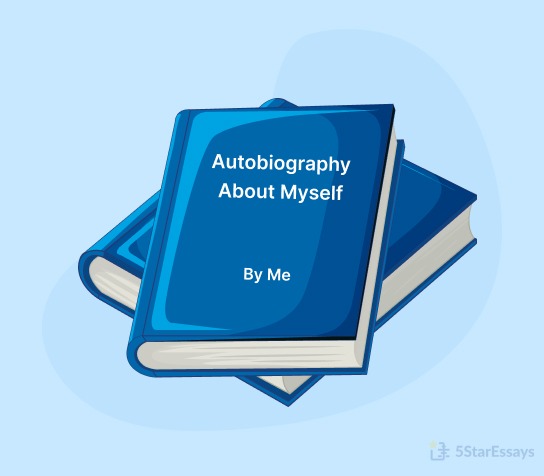
Autobiography represents one of literature’s most intimate and revealing forms—a genre where authors turn their gaze inward to examine, interpret, and share their own life experiences. Unlike biography, which relies on external research and third-person perspective, autobiography emerges directly from personal memory and self-reflection, creating a unique literary space where truth and narrative artistry intersect.
The Essence of Autobiographical Writing

At its core, autobiography involves the deliberate shaping of personal experience into meaningful narrative. This process requires authors to:
- Select significant events from countless life experiences
- Organize memories into coherent narrative structures
- Reflect on the meaning and impact of past experiences
- Develop an authentic narrative voice that engages readers
- Balance honesty with appropriate boundaries around privacy
While autobiography appears straightforward—simply telling one’s own story—the reality involves complex decisions about perspective, scope, structure, and purpose that transform lived experience into literature.
Historical Evolution of the Form
Autobiography has evolved considerably over centuries:
Early Foundations
Religious confessions like Augustine’s “Confessions” (397-400 CE) established spiritual self-examination as a legitimate literary pursuit. These early works often framed personal narrative as a journey toward divine truth rather than self-exploration for its own sake. Personal journals, letters, and deathbed recollections functioned as proto-autobiographical texts, though many were never intended for publication.
Enlightenment Transformations
Jean-Jacques Rousseau‘s “Confessions” (1782) marked a pivotal moment, introducing secular self-examination with unprecedented psychological depth and emotional honesty. This period established autobiography as a legitimate literary genre rather than merely historical documentation.
19th Century Expansion
The Victorian era saw autobiography flourish with diverse approaches, from John Stuart Mill’s intellectual autobiography to narratives by formerly enslaved people like Frederick Douglass and Harriet Jacobs, using personal stories to illuminate broader social injustices.
20th Century Innovations
Modernist experiments fragmented traditional chronological narratives, reflecting new understandings of memory and consciousness. Post-colonial and marginalized voices increasingly used autobiography to assert identity and challenge dominant narratives. The literary memoir emerged as a refined form focused on specific life periods rather than comprehensive life stories.
Contemporary Developments
Digital forms including blogs, social media life-writing, and multimedia approaches have expanded autobiographical possibilities. Market demand for “authentic” personal stories has created both opportunities and challenges for the genre. Greater diversity in published autobiographical voices has enriched the literary landscape while raising questions about representation and cultural appropriation.
Approaches to Autobiographical Structure
Chronological Narratives
The most traditional structure, chronological autobiography follows the life from birth or childhood toward the present, creating a linear progression that emphasizes development over time. This approach provides clarity and emphasizes cause-effect relationships but may sacrifice thematic coherence for temporal accuracy. Works like Benjamin Franklin’s “Autobiography” exemplify this approach, showing how earlier experiences shape later values and achievements.
Thematic Organization
Some autobiographers arrange experiences around key themes, motifs, or questions rather than strict chronology. Maya Angelou’s series of autobiographical works, including “I Know Why the Caged Bird Sings,” uses this approach, organizing memories around themes of voice, silence, freedom, and constraint while still maintaining a general forward movement through time.
Pivotal Moment Focus
Certain autobiographies center on transformative experiences—trauma, achievement, revelation, or adventure—using these pivotal moments as anchors for broader life reflection. Joan Didion’s “The Year of Magical Thinking” concentrates on grief following her husband’s death, using this period as a lens to explore her marriage, writing life, and understanding of mortality.
Fragmented/Mosaic Forms
Modernist and postmodern autobiographies often reject chronological continuity in favor of episodic structures that better reflect the nature of memory itself. Vladimir Nabokov’s “Speak, Memory” exemplifies this approach, arranging vivid recollections into thematic chapters that jump across time periods while creating a coherent artistic whole.
Braided Narratives
Some contemporary autobiographies interweave different time periods or storylines, creating complex patterns that reveal unexpected connections. Alison Bechdel’s graphic memoir “Fun Home” alternates between childhood experiences and adult reflections, allowing insights from each timeframe to illuminate the other.
Narrative Voice and Perspective
The Retrospective “I”
Autobiography typically employs first-person narration with a complex relationship between the experiencing self (who lived the events) and the narrating self (who reflects on and interprets those events years later). This temporal distance creates space for reflection, insight, and sometimes irony regarding one’s younger self.
Reliability and Memory
All autobiographers confront questions about memory’s reliability and the impossibility of perfect recall. Some directly acknowledge these limitations, while others create the illusion of comprehensive remembrance. Modern autobiographers often explicitly address the constructed nature of their narratives, acknowledging how present circumstances influence past interpretations.
Multiple Perspectives
Innovative autobiographies sometimes incorporate perspectives beyond the author’s own—including others’ versions of shared events, documentary evidence, or speculative reconstructions of forgotten moments. Dave Eggers’ “A Heartbreaking Work of Staggering Genius” playfully incorporates imagined scenes, interview formats, and meta-textual commentary alongside traditional first-person narration.
Ethical Dimensions
Truth Claims and Artistic License
Autobiography exists at the intersection of factual truth and narrative art, creating inherent tensions. Readers expect fundamental honesty but recognize the impossibility of perfect accuracy. The controversy surrounding memoirs like James Frey’s “A Million Little Pieces,” which fabricated or exaggerated significant events, demonstrates the complex contract between autobiographical authors and their readers.
Representing Others
When writing about their own lives, autobiographers inevitably include others who may not have consented to public portrayal. This raises ethical questions about privacy, potential harm, and the right to tell shared stories. Some authors disguise identities or share manuscripts with featured individuals before publication, while others prioritize their own truth-telling over others’ privacy concerns.
Cultural Appropriation and Authenticity
As autobiography increasingly becomes a medium for sharing marginalized experiences, questions arise about who can authentically represent certain communities and what responsibilities accompany such representation. This tension exists both in how authors present themselves and how publishers market their stories.
Literary Craft in Autobiography
Scene Construction
Effective autobiographers recreate key moments with sensory detail, dialogue, and pacing that transform remembered experience into vivid scenes. This requires balancing factual accuracy with narrative techniques drawn from fiction.
Character Development
Paradoxically, autobiographers must develop themselves as characters—selecting which traits to emphasize, how to demonstrate personal growth, and how to create a protagonist who engages readers while remaining truthful to lived experience. They must also characterize important people in their lives with both honesty and complexity.
Emotional Truth
Beyond factual accuracy, autobiographers pursue emotional truth—the authentic feeling and significance of experiences even when specific details may be reconstructed or compressed. This approach knowledge memory’s imperfection while honoring the genuine impact of life events.
Finding Universal in the Particular
The most resonant autobiographies transform highly specific personal experiences into narratives with universal relevance. Through careful selection and reflection, authors help readers see themselves in ostensibly foreign experiences, creating connection across differences of time, culture, and circumstance.
Contemporary Trends and Innovations
Graphic Memoirs
Illustrated autobiographical works like Art Spiegelman’s “Maus,” Marjane Satrapi’s “Persepolis,” and Alison Bechdel’s “Fun Home” use the interplay between text and image to create multilayered narratives, visualizing memory’s complexity in unique ways.
Digital Life Writing
Social media platforms, blogs, and other digital tools have democratized autobiographical expression while raising new questions about audience, curation, and the blurring of public/private boundaries. These forms often emphasize immediacy over retrospection, creating ongoing narratives rather than completed life stories.
Hybrid Forms
Contemporary autobiographers increasingly blend memoir with other genres—travel writing, cultural criticism, historical research, scientific exploration—creating hybrid forms that contextualize personal experience within broader frameworks. Maggie Nelson’s “The Argonauts” merges memoir with philosophical inquiry, while Ta-Nehisi Coates’ “Between the World and Me” combines personal narrative with historical and sociological analysis.
Collaborative Autobiography
Some innovative works challenge individual authorship through collaborative approaches—ghostwritten celebrity memoirs, oral histories, family collaboration, or community-based projects that collect multiple life stories around shared experiences or identities.
Therapeutic and Social Dimensions
Personal Integration
The process of crafting coherent narrative from disparate life experiences can serve therapeutic purposes, helping authors integrate traumatic experiences, understand patterns in their lives, and create meaning from chaos. This psychological benefit exists regardless of publication.
Community Building
Autobiographies from marginalized perspectives can create recognition and solidarity among those with similar experiences, validating realities often absent from dominant cultural narratives. This function makes autobiography a powerful tool for social movements and identity formation.
Historical Documentation
Personal narratives preserve individual experiences within broader historical contexts, providing future generations with intimate views of how people experienced significant events. Holocaust memoirs, immigrant narratives, and accounts of political movements serve this testimonial function.
Crafting Your Own Autobiography
Those considering writing their own life stories might consider:
- Identifying core themes, questions, or patterns that provide structure beyond chronology
- Starting with vivid, specific memories rather than comprehensive coverage
- Exploring the perspective and distance from which to narrate (immediate or reflective)
- Determining the balance between internal experience and external events
- Considering ethical implications for others who appear in the narrative
- Deciding whether the primary purpose is personal, familial, literary, or political
Autobiography remains one of the most accessible yet challenging literary forms—seemingly straightforward yet requiring complex decisions about truth, art, ethics, and purpose. At its best, it transforms individual experience into narratives that illuminate not just one life but aspects of the human condition itself, creating bridges of understanding across time and difference.







